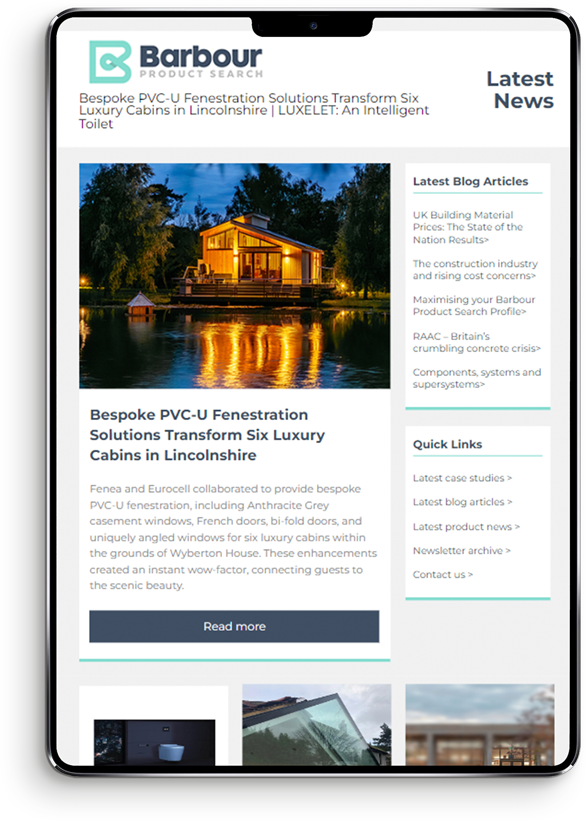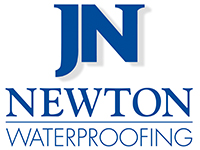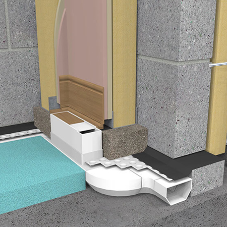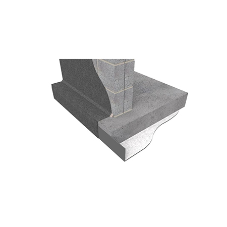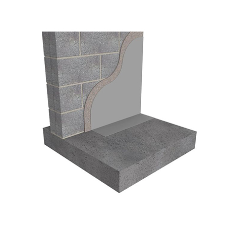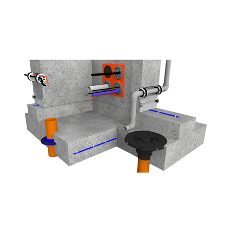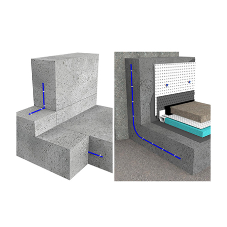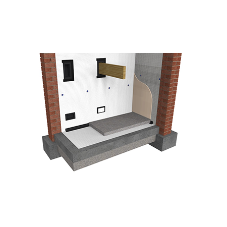Ensuring the integrity of below-ground structures is paramount on construction projects. One critical aspect of this process is the effective sealing of service penetrations – openings created through the structure itself for utilities such as pipes, ducts, and cables.
If not properly sealed, these penetrations can become pathways for water ingress, compromising the internal environment and posing risks to occupants.
This guide explores some of the best options for sealing service penetrations and emphasises the importance of planning, preparation and detailing to ensure long-term waterproofing performance.
Understanding Service Penetrations and Their Challenges
Service penetrations are essential for routing utilities into buildings. However, they present unique challenges:
Water Ingress: Unsealed or poorly sealed penetrations can allow groundwater to enter, leading to dampness, mould, and structural deterioration.
Structural Movement: Buildings naturally settle over time, and penetrations must accommodate these movements without compromising the seal.
Compartmentation: In multi-use structures, incorrectly sealed penetrations may not provide the necessary fire protection between building components.
Given these challenges, selecting appropriate sealing methods is crucial for maintaining the integrity and safety of below-ground structures.
Solutions for Sealing Service Penetrations
Our range of specialised products are designed to address the complexities of sealing service entries, depending on whether they are pre-planned, unplanned, or failed penetrations.
Mechanical Press Seals for Service Entries
Hauff products
Our partnership with Hauff-Technik, a leading European manufacturer of sealing systems, ensures that we can supply their specialist systems for cable, pipe and line entries.
Where a service entry is pre-planned then the service entry sleeves can be positioned ready for the placement of the concrete. Once the sleeve is in place and the number and type of services passing through it is known, Hauff-Technik provide a range of specifically engineered mechanical press seals for sealing the services and delivering a permanent waterproof and gas-tight solution.
These precision-manufactured seals maintain a watertight connection while allowing for movement and thermal expansion. Their features include:
Modular and prefabricated seals for simple and reliable installation
EPDM or NBR rubber components, ensuring resistance to water, gas, and chemical exposure
Multi-utility compatibility, suitable for power cables, data lines, and pipework
This solution is particularly effective in applications where multiple service ducts require high-performance sealing to maintain the waterproofing system and the integrity of the concrete structure.
Even when the service entry is unplanned, or the pipes and cables are already passing through the service entry sleeve, Hauff-Technik’s segmented (or split) press seals are still often the easiest, safest and most robust method for permanently sealing the sleeve.
However, there will still be occasions where press seals cannot be used, and an alternative sealing method for the service penetration is needed. This could include situations where:
Non-standard service entry sleeves are used, such as letterbox sleeves
A previously cylindrical sleeve has deformed under pressure
Corrugated conduits pass through the service entry sleeve, and cannot be removed
The internal diameter of the service entry sleeve is not suitable for a press seal
In such instances, alternative methods of sealing service penetrations are required.
Mastic Sealing Systems for Service Penetrations
Filoform filoseal sealing service penetrations
For a robust solution that provides long-term protection against water ingress when a press seal is not a viable option, we partner with two leading manufacturers of mastic sealing systems.
Both FiloSeal and Stopaq are high-performance systems that provide a gas- and water-tight seal around service penetrations within existing or unplanned service entry sleeves and/or pipe entries.
The Stopaq system includes a single-component, flexible sealing compound, and a fibre-reinforced, non-shrink mortar. The unique benefits of the Stopaq sealing system include:
The ability to immediately seal service entries that are already leaking, even with heavy volumes of water
The sealing compound is permanently flexible, allowing for new services to be added and sealed in future
The FiloSeal systems from FiloForm provide a seal for cables and pipes in ducts, bore holes and transit frames, with options for both waterproofing and fire protection. The unique benefits of the FiloSeal system include:
Up to 4 hours of fire resistance with the FiloSeal +HD Fire variant
The ability to fill and seal larger spaces and service entries due to the robust hexagonal backing providing support for the FiloSeal sealant
These sealants ensure that service penetrations remain fully protected, even in demanding environments where dynamic movement or high hydrostatic pressure is present.
Resin Sealing Systems for Leaking Services
Leakplug Photo 2 Out of Box
For projects and scenarios where a failed service entry is actively leaking and requires a rapid response to stop the flow of water and seal around service penetrations, our LeakPlug single-use kit is an ideal solution.
The kit utilises a foaming polyurethane injection resin, coupled with a catalyst and polyester fibres which, when mixed, creates a rapid-setting, high-strength leak-sealing resin plug.
Our LeakPlug kit contains enough material to seal two 110mm ducts, with all necessary products and protective gloves included, making it convenient and easy to use. The other unique benefits of LeakPlug include:
Fast and effective sealing for emergencies, with a reaction time of just 30 seconds
Seals pipe and cable ducts even with high water pressure and heavy flow
Overall, LeakPlug is an essential tool for quick and effective intervention, providing a durable solution for sealing water ingress at critical penetration points.
Best Practices for Sealing Service Penetrations
Effective waterproofing of service penetrations requires careful planning and correct application. To ensure a successful outcome, follow these best practices:
Early Planning: Identify all service entry points during the design phase to incorporate the most suitable sealing solutions.
Material Compatibility: Ensure that sealants and coatings are compatible with both the pipe or cable material and the surrounding structure.
Allow for Movement: Choose sealing materials that can accommodate anticipated structural movement without compromising the seal.
Compliance with Standards: Always adhere to relevant UK building regulations and waterproofing standards to maintain safety and performance.
Read more
What Options Are Available for Sealing Service Penetrations Below Ground?
| T | 01732 496 512 |
|---|---|
| F | (01732) 359033 |
| E | tech@newtonwaterproofing.co.uk |
| W | Visit Newton Waterproofing Systems (John Newton & Company)'s website |
| Newton House, 17-19 Sovereign Way, Tonbridge, Kent, TN9 1RH |
Products by this Company
